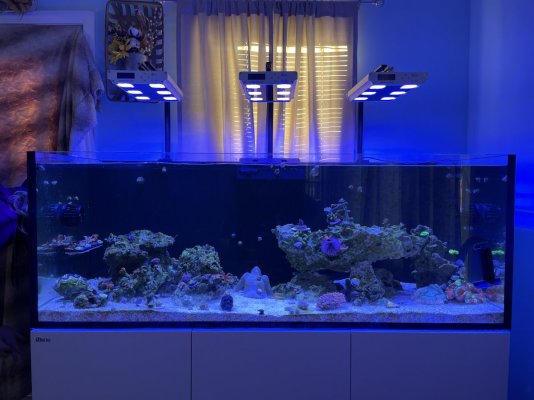I have a question that may be hard to answer, but I hope someone here can help. @Vinny@GHLUSA hopefully has an answer.
I am considering buying a used Mitras LX 7206 from a seller here on the forums. But my question has to do with the True UV (380nm/385nm) LEDs. It will be going over a tank without a hood, and I have a 2-year-old who will be looking up at the tank and I know UV can be bad for your eyes, so I am wondering if I should be thinking of building a canopy before I install it, just so that she's not getting her eyes hit with UV.
Also, I've tried to find a recommended mounting height (off the surface of the water) but haven't been able to locate one, so if you could also give me that info it would be appreciated. It's going to be over a 35.43" L x 23.62" W x 22.44" H tank, and as I understand it, it's recommended/rated for 36x24x30 so this light should be plenty?
I am considering buying a used Mitras LX 7206 from a seller here on the forums. But my question has to do with the True UV (380nm/385nm) LEDs. It will be going over a tank without a hood, and I have a 2-year-old who will be looking up at the tank and I know UV can be bad for your eyes, so I am wondering if I should be thinking of building a canopy before I install it, just so that she's not getting her eyes hit with UV.
Also, I've tried to find a recommended mounting height (off the surface of the water) but haven't been able to locate one, so if you could also give me that info it would be appreciated. It's going to be over a 35.43" L x 23.62" W x 22.44" H tank, and as I understand it, it's recommended/rated for 36x24x30 so this light should be plenty?










